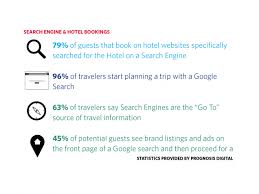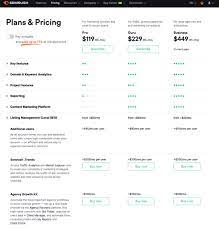Search Engine Marketing: A Powerful Tool for Online Success
In today’s digital age, having a strong online presence is crucial for the success of any business. And one of the most effective ways to achieve this is through search engine marketing (SEM). SEM is a form of online marketing that involves promoting your website through paid advertising on search engine results pages (SERPs).
Search engines like Google, Bing, and Yahoo! are the go-to resources for people searching for products or services online. By using SEM, you can ensure that your website appears at the top of search engine results pages when users search for specific keywords related to your business. This means more visibility, more traffic, and ultimately more sales.
There are two main types of SEM: pay-per-click (PPC) advertising and search engine optimization (SEO). Let’s take a closer look at each.
PPC Advertising
PPC advertising involves placing ads on SERPs and paying each time someone clicks on one of your ads. The cost per click (CPC) varies depending on the competitiveness of the keyword you’re targeting and other factors such as ad relevance and quality score.
PPC advertising allows you to target specific keywords related to your business and create highly targeted ads that attract potential customers. You can also set a budget for your campaigns and track their performance in real-time, making it easy to adjust your strategy as needed.
SEO
SEO involves optimizing your website to rank higher in organic search results. This means making changes to your website’s structure, content, and other elements to make it more visible to search engines.
Unlike PPC advertising, SEO does not involve paying for clicks. Instead, it takes time and effort to build up your website’s authority and relevance in the eyes of search engines. However, once you achieve a high ranking in organic search results, you can enjoy long-term benefits without paying ongoing fees.
The Benefits of SEM
Regardless of whether you choose PPC advertising or SEO, SEM offers a range of benefits for businesses of all sizes. Here are just a few:
- Increased visibility: By appearing at the top of search engine results pages, you can increase your website’s visibility and attract more potential customers.
- Targeted traffic: SEM allows you to target specific keywords and demographics, ensuring that your ads are seen by the right people at the right time.
- Measurable results: With SEM, you can track the performance of your campaigns in real-time and make adjustments as needed to improve your ROI.
- Cost-effective: While PPC advertising involves paying for clicks, it can still be a cost-effective way to drive traffic to your website when compared to traditional advertising methods.
In conclusion, search engine marketing is a powerful tool for businesses looking to succeed online. Whether you choose PPC advertising or SEO (or both), SEM can help you increase visibility, attract targeted traffic, and achieve measurable results. So if you’re not already using SEM as part of your online marketing strategy, now is the time to get started!
Demystifying Search Engine Marketing: Answers to 4 Common Questions
- What is the main difference between SEO and SEM?
- What does search engine marketing do?
- What is an example of search engine marketing?
- What are the three types of search engine marketing?
What is the main difference between SEO and SEM?
The main difference between SEO (Search Engine Optimization) and SEM (Search Engine Marketing) is that SEO is a subset of SEM.
SEO involves optimizing your website to rank higher in organic search results, which means making changes to your website’s structure, content, and other elements to make it more visible to search engines. It does not involve paying for clicks.
On the other hand, SEM involves promoting your website through paid advertising on search engine results pages (SERPs). This includes PPC (Pay-per-click) advertising, where you pay each time someone clicks on one of your ads. SEM also includes SEO as part of its strategy.
While both SEO and SEM aim to increase visibility and attract more traffic to your website, they differ in terms of cost, time frame, and approach. SEO takes time and effort to build up your website’s authority and relevance in the eyes of search engines, but once you achieve a high ranking in organic search results, you can enjoy long-term benefits without paying ongoing fees. PPC advertising can provide immediate results but requires ongoing investment to maintain visibility.
In summary, SEO is a free way of optimizing your website for better rankings on SERPs while SEM is a paid way of achieving better visibility on SERPs through various paid methods like PPC ads etc.
What does search engine marketing do?
Search engine marketing (SEM) is a form of online marketing that involves promoting a website through paid advertising on search engine results pages (SERPs). SEM aims to increase the visibility of a website in search engine results by targeting specific keywords related to the business.
With SEM, businesses can create highly targeted ads that appear at the top of search engine results pages when users search for specific keywords related to their products or services. This means that businesses can attract more potential customers and drive traffic to their website.
SEM includes two main types of tactics: pay-per-click (PPC) advertising and search engine optimization (SEO). PPC advertising involves paying each time someone clicks on one of your ads, while SEO involves optimizing your website to rank higher in organic search results.
Overall, SEM helps businesses increase their online visibility, attract targeted traffic, and achieve measurable results. It is a powerful tool for businesses looking to succeed online and should be part of any comprehensive online marketing strategy.
What is an example of search engine marketing?
An example of search engine marketing is when a company creates a Google Ads campaign to promote their products or services. They choose specific keywords related to their business and create ads that will appear at the top of Google search results when someone searches for those keywords. The company pays each time someone clicks on their ad, which is known as pay-per-click (PPC) advertising. This allows them to target potential customers who are actively searching for products or services like theirs and drive traffic to their website.
What are the three types of search engine marketing?
The three types of search engine marketing (SEM) are:
- Search Engine Optimization (SEO): SEO involves optimizing your website to rank higher in organic search results. It includes making changes to your website’s structure, content, and other elements to make it more visible to search engines and improve its relevance and authority.
- Pay-per-click Advertising (PPC): PPC advertising involves placing ads on search engine results pages (SERPs) and paying each time someone clicks on one of your ads. The cost per click (CPC) varies depending on the competitiveness of the keyword you’re targeting and other factors such as ad relevance and quality score.
- Local Search Marketing: Local search marketing is a type of SEM that focuses on promoting a business’s products or services to local customers. It includes tactics such as optimizing your Google My Business listing, building local citations, and targeting location-specific keywords in your PPC campaigns or SEO efforts.
Each type of SEM has its own advantages and disadvantages, so businesses often use a combination of these tactics to achieve their online marketing goals.




